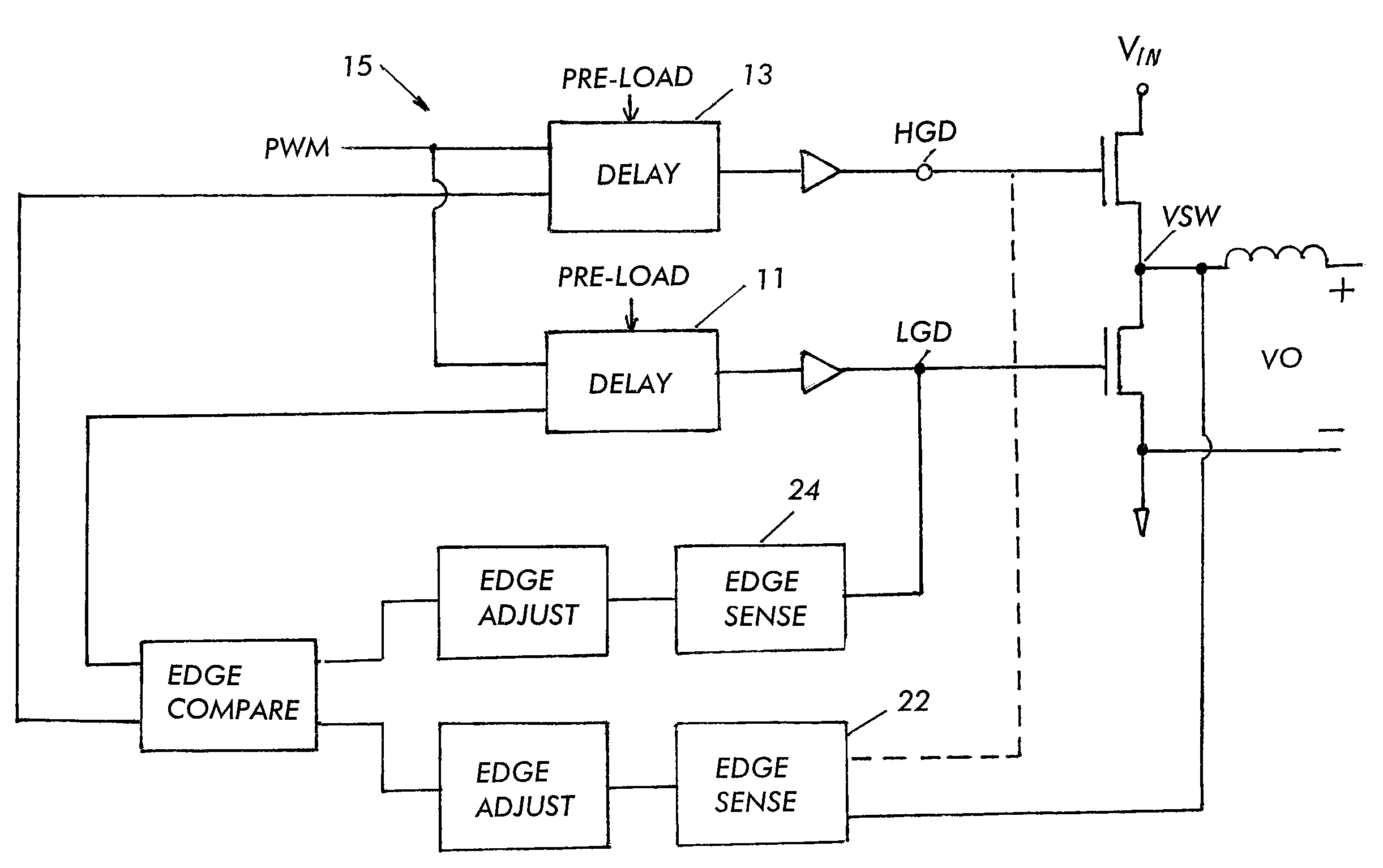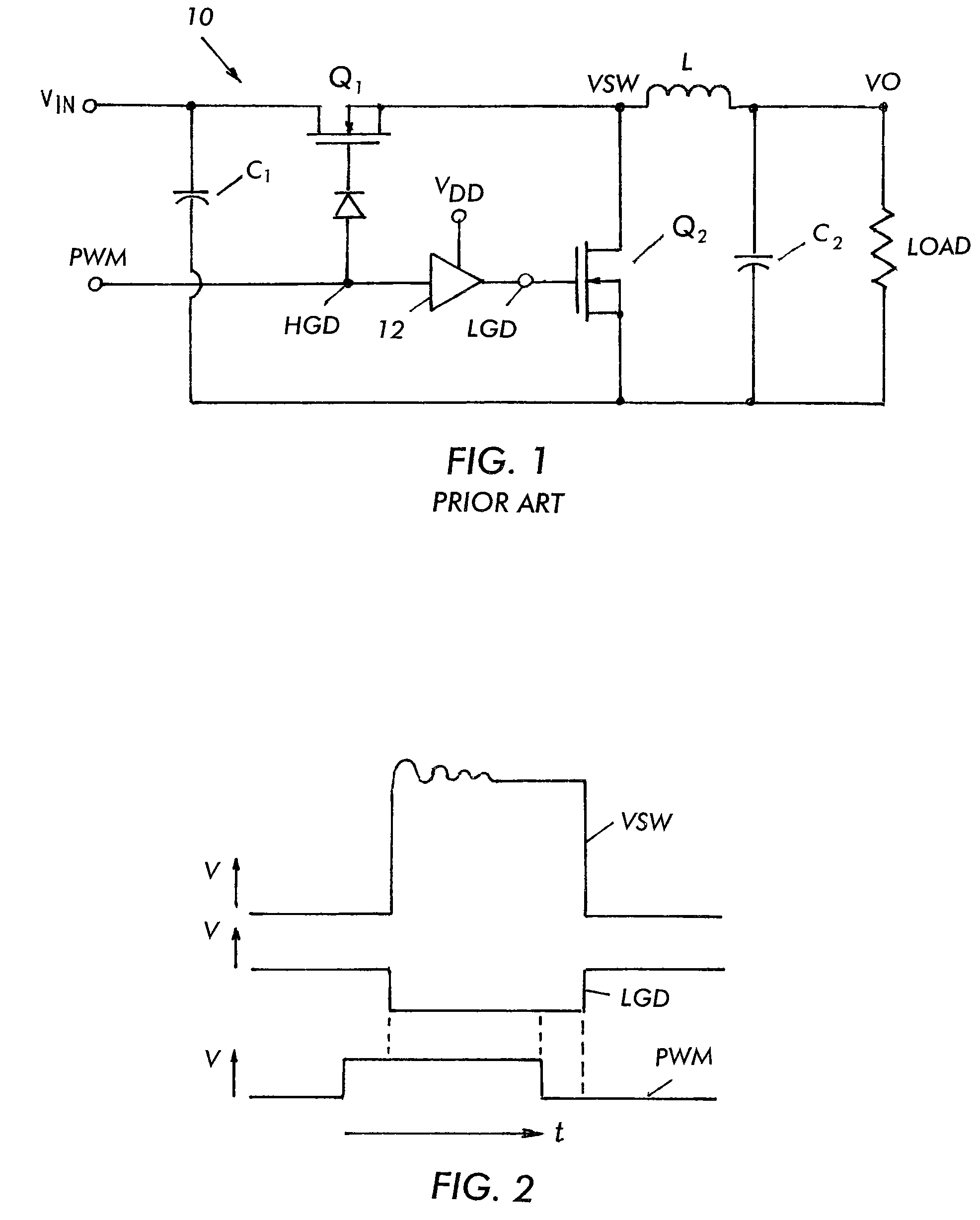Intelligent dead time control
a dead time control and intelligent technology, applied in the direction of electric variable regulation, process and machine control, instruments, etc., can solve the problems of power loss, delay between control, and the inability of the dead time itself to achieve the optimum delay, so as to achieve the effect of optimum dead time and power loss reduction
- Summary
- Abstract
- Description
- Claims
- Application Information
AI Technical Summary
Benefits of technology
Problems solved by technology
Method used
Image
Examples
Embodiment Construction
[0025]FIG. 1 shows a PWM input to gates of high- and low-side transistors Q1 and Q2. The signal to the high-side transistor Q1 is identified as HGD and the signal to the low-side transistor Q2 is inverted by an inverter 12 and identified as LGD, having a waveshape LGD shown in FIG. 2. The high- and low-side transistors Q1 and Q2 are connecting at a switching node.
[0026]FIG. 2 illustrates, rising and falling edges of the waveshape of the signal LGD aligned with rising and falling edges of a waveshape of a voltage VSW at the switching node and / or a waveshape of the signal HGD.
[0027]Returning to FIG. 1, in accordance with the invention, in a high speed synchronous buck converter where the low-side transistor Q2 is made to switch very fast, for example, within one nanosecond, the optimum dead time occurs when a gate signal of the low-side transistor Q2 is aligned with the rise / fall edges of a waveform of the voltage VSW and / or the signal HGD.
[0028]The synchronization of the waveshape ed...
PUM
 Login to View More
Login to View More Abstract
Description
Claims
Application Information
 Login to View More
Login to View More - R&D
- Intellectual Property
- Life Sciences
- Materials
- Tech Scout
- Unparalleled Data Quality
- Higher Quality Content
- 60% Fewer Hallucinations
Browse by: Latest US Patents, China's latest patents, Technical Efficacy Thesaurus, Application Domain, Technology Topic, Popular Technical Reports.
© 2025 PatSnap. All rights reserved.Legal|Privacy policy|Modern Slavery Act Transparency Statement|Sitemap|About US| Contact US: help@patsnap.com



